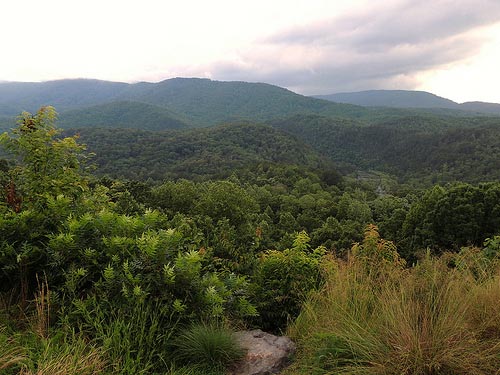This month marks the 50th anniversary of the assassination of President John F. Kennedy in Dallas, Texas. Much of the coverage and retrospective articles you have no doubt seen cover the events of that Friday, November 22, 1963. Others focus on the Cuban missile crisis and his interactions with the former Soviet Union. But for all of the reflections on President Kennedy’s policies in the realm of foreign policy and civil rights, it is what he did for our national forests that is the topic of this retrospective.

The National Archives contains a record of all the Executive Orders (EO) issued since the Hoover Administration, although currently you can only view specific EOs dating back to 1937 online. But all of President Kennedy’s are listed there, which is where we find his legacy relating to national forests (NF).
Not quite four months after his inauguration, in April of 1961, President Kennedy issued the first of his seven EOs concerning national forests. The first one modified the boundaries of nine forests in Illinois, Michigan, Missouri and Wisconsin, excluding lands that had previously been in private ownership. The second and third ones were issued on the same day, February 9, 1962, in the second year of his presidency. Both EOs altered existing national forests. The second redefined the boundaries of the Caribbean NF in Puerto Rico while the third actually consolidated two separate national forests in Michigan: the Hiawatha and the Marquette.
The Hiawatha NF, in the Upper Peninsula, currently consists of approximately 1 million acres, almost a quarter of which was part of the former Marquette NF. Three months later, in his fourth EO, President Kennedy added the additional land of Round Island to the Hiawatha NF. In addition to extending the acreage of the Hiawatha, the EO also transferred lands between the Mark Twain and the Clark National Forests in Missouri.

Twenty-six parcels of land within Tennessee and Virginia were allocated to the Cherokee and Jefferson National Forests by the fifth EO, issued November, 1962. The specific parcels of land designated by President Kennedy were identified in a prior agreement between the Tennessee Valley Authority and the Department of Agriculture (the agency that houses the U.S. Forest Service) as appropriate for national forest lands.
On the same day, November 29, 1962, the Federal Register published President Kennedy’s sixth EO, which emulated the parameters of the fifth one and formalized an agreement set out between the Tennessee Valley Authority and the U.S. Department of Agriculture. This time, lands near the Nantahala and the Cherokee National Forests, located in North Carolina and Tennessee, were included in and reserved as a part of the two national forests. President Kennedy’s seventh, and final, EO concerning the national forests was published in the Federal Register on January 1, 1963. This EO extended the boundaries of the previously designated Superior NF in Minnesota, and the Clark NF in Missouri. If you’ll remember, the Clark benefited from a land transfer from the Mark Twain NF in President Kennedy’s fourth EO.
Even though President Kennedy never designated new forestlands, he did enhance and add to the forests already in existence when he assumed office in 1961. Even without a new designation, and having less than one term in office, President Kennedy made his mark upon numerous national forests throughout the southeast and the Midwest. Ask not, indeed.